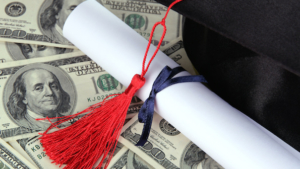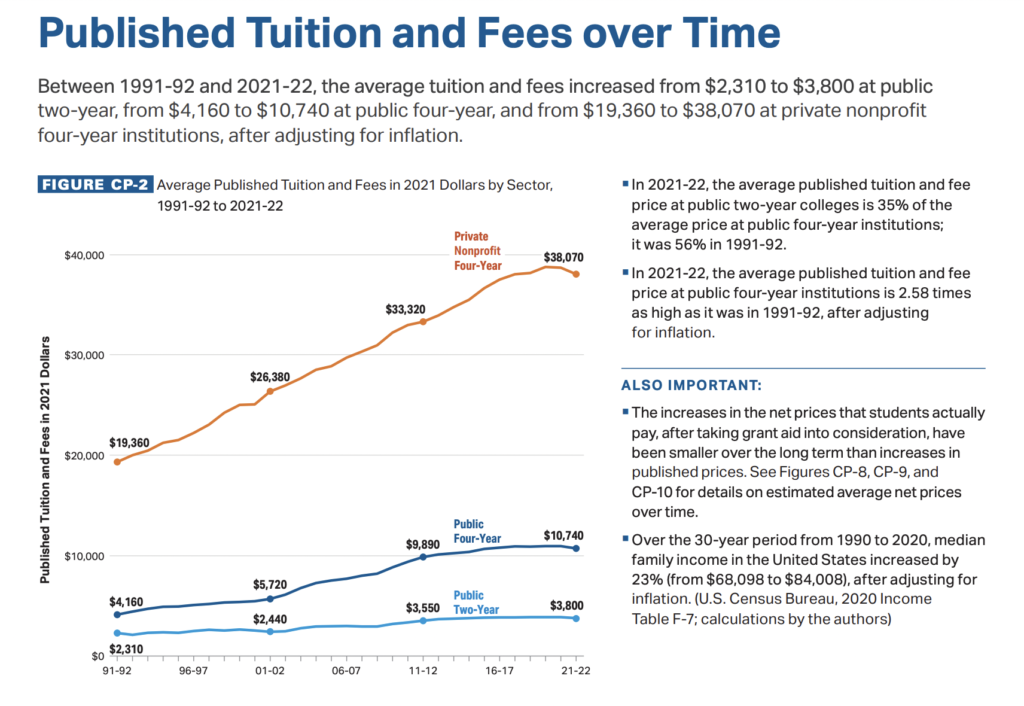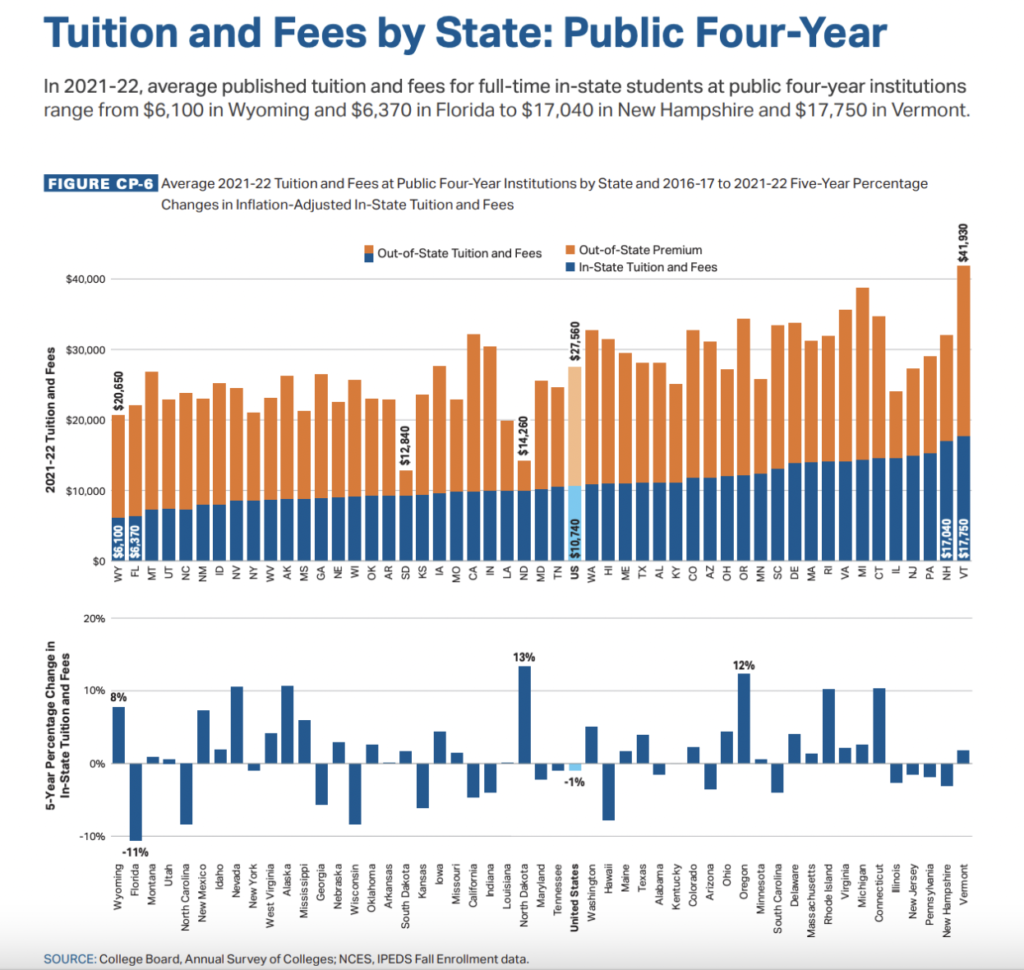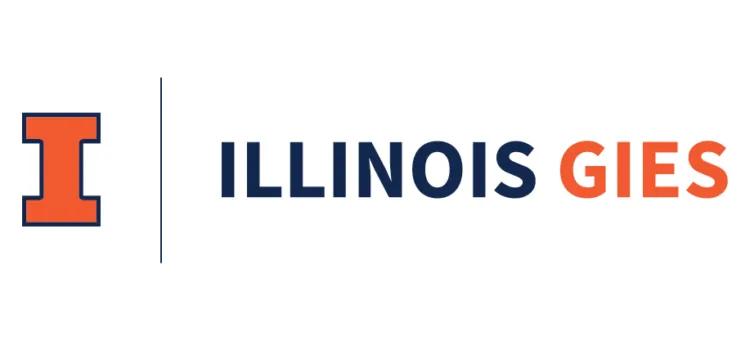
We already know COVID is changing higher education in meaningful and noticeable ways. Almost 700,000 fewer students took the SAT admissions tests this year than the class of 2020, and more colleges are going “test optional” for their admission processes. The virus closed many campuses in fall of 2020, forcing schools to find innovative ways to engage their freshmen during their first years on campus.
The College Board’s most recent Trends in College Pricing and Student Aid report confirms some trends that were already suspected, such as a nearly 700,000 enrollment decline in undergraduate students to U.S. colleges and universities.
But it has some bright spots as well: While average published tuition and fees at U.S. colleges continued to rise in academic year 2020-2021, the pandemic slowed the rate considerably. The report finds an historically low rate of increase of 1.6% for in-state students at public four-year colleges, 2.1% for students at private nonprofit colleges, and 1.3% for students at public two-year schools. When adjusting for 3.9% inflation between the first eight months of 2020 and 2021, the average tuition and fees paid by students actually decreased in all three categories.
“Some institutions and states are holding tuition and fees flat this year,” says Jennifer Ma, senior policy research scientist at College Board and coauthor of the report. “In 15 states, the average public two-year in-district tuition and fees did not increase in 2021-22. In three states, the average public four-year in-state tuition and fees did not increase.”
STICKER PRICES: CHARGES THAT COLLEGES PUBLISH
Since 1992, and after adjusting for inflation, average published prices across all types of colleges and universities rose precipitably, most sharply at public, four-year colleges. Sticker prices in that category shot up 158% from an average $4,160 to $10,740, as seen in the College Board graph below. During the same period, average tuition and fees rose 64.5% at public two-year colleges and 96.6% at private, nonprofit universities.
However, you can see those steep rises round downward as the pandemic emerges, beginning in academic year 2020-2021.

Source: College Board's '2021 Trends in College Pricing and Student Aid'
On a state-by-state basis, Wyoming was the cheapest state to attend college with an average $6,100 in-state sticker price ($20,650 out-of-state) while Vermont was the most expensive ($17,750 in-state and $41,930 out-of-state).
In the last five years, 29 states have increased in average published tuition and fee prices while 21 states have decreased, as seen in the College Board graph below. North Dakota’s average sticker prices have risen 13% while Oregon’s have increased 12%.

Source: College Board's '2021 Trends in College Pricing and Student Aid'
If these prices seem low, it’s because they don’t factor in estimated room and board, books and supplies, transportation and other expenses. The report found that average estimated budgets for 2021-22 for full-time undergraduate students are more in line with numbers you’re used to seeing: Ranging from $18,830 for public two-year in-district students, $27,330 for public four-year in-state students, $44,150 for public four-year out-of-state students, and $55,800 for private nonprofit four-year students.
NET PRICES: WHAT STUDENTS PAY AFTER GRANT AID AND SCHOLARSHIPS
As is often the case, the price published is not always the price paid. Good news for student wallets: College Board's 2021 report showed that the average net tuition and fees (those paid by students after grant aid and scholarships) have actually decreased over the last five years.
College Board also tracks the average net prices of U.S. schools. That is the difference between a school’s sticker price and the cost to students after average grant aid and scholarships received by full-time students. For example, in 2019-20, 78% of public four-year, and 88% of private nonprofit four-year first-time full-time undergraduate students received federal, state, or institutional grant aid, according to the report.
The report found that the average net tuition and fees paid by full-time, in-state students is lower this academic year than at any time since 2006-07. Students at four-year colleges paid an average of $2,640 in tuition and fees in 2021-22 compared to a peak of $3,720 in 2012-2013 (in 2021 dollars.) Students at private nonprofit four-year institutions paid an average of $14,990 this year.
ENROLLMENTS DOWN IN COVID TIMES
One figure the pandemic is having a negative impact on is enrollment. On average, enrollments fell 3%, or by 631,000 students, between fall 2019 and fall 2020. In fact, enrollment fell by 698,000 students at undergraduate schools but rose by 67,000 in graduate programs.
Meanwhile, the share of college students enrolled in online programs rose from 36% to 75% for undergraduate programs and from 42% to 71% of graduate programs.
“This year's data underscore the significant impact covid-19 has had on higher education,” says Jessica Howell, College Board’s vice president for research. “In fall 2020, total undergraduate enrollment declined by 4%, or nearly 700,000, compared to fall 2019, with the vast majority of the decline occurring at community colleges."
DON’T MISS: 2021 IN REVIEW: POETS&QUANTS’ 10 MOST-READ UNDERGRAD STORIES OF 2021 and WHICH UNDERGRAD B-SCHOOLS REQUIRE COVID SHOTS & BOOSTERS IN 2022?











